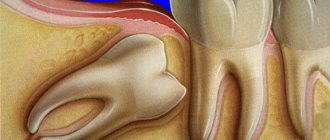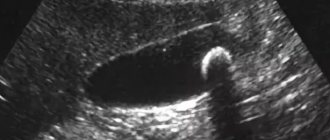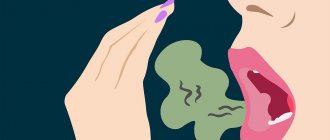Potent antibacterial drugs help fight serious diseases and advanced infections. Unfortunately, taking such medications often has a negative effect on all body systems. Antibiotics have many side effects, including:
- digestive disorders - constipation or diarrhea,
- bitterness or other unpleasant taste in the mouth,
- bloating and increased gas formation,
- nausea, abdominal pain, etc.
Negative reactions from the gastrointestinal tract are caused by the death of beneficial bacteria in the intestines. Strong antibiotics destroy not only infectious agents, but also beneficial microflora, so dysbiosis often develops after treatment. How to remove bitterness in the mouth after antibiotics and restore intestinal microflora? Find out what experts answer to these questions.
Bitterness in the mouth after taking Clarithromycin
Taking the medicine often causes a bitter feeling in the mouth. This is evidence that bile has entered the esophagus and stagnation has occurred. The gallbladder reacts this way to the use of a strong substance. Malfunctions in the gastrointestinal tract are another possible cause of bitterness in the mouth. In addition, Clarithromycin affects the functioning of taste buds . Hence the bitter taste in the mouth again. How to deal with it? Can we consider this to be the norm?
Is it normal for a feeling of bitterness to appear after taking the drug, what to do when it appears
When a doctor prescribes Clarithromycin, every second patient feels a bitter taste. This does not mean that you need to stop taking the medicine. But it is necessary to inform the doctor about the discomfort: he will draw up a further treatment plan and tell you how to relieve the resulting intoxication.
It is usually not difficult to deal with it yourself. The taste in your mouth will disappear if:
Photo 1. Packaging of activated carbon in tablet form.
- During treatment, adhere to a dietary diet and exclude smoked, spicy and fatty foods from meals;
- replace tea or coffee with drinks made from berries or herbs ;
- cleanse the gastrointestinal tract using a simple absorbent - activated carbon , which has the ability to bind and remove toxins;
- drink more water than usual - at least 3 liters per day .
Important! If you start taking charcoal 12 hours or more after taking an antibiotic, there will be no benefit . Even ten hours is enough for the medicinal drug to penetrate the systemic bloodstream and cause a feeling of bitterness.
Clarithromycin
The simultaneous use of clarithromycin and the following drugs is contraindicated due to the possibility of serious side effects.
Cisapride, pimozide, terfenadine and astemizole
When clarithromycin was taken together with cisapride, pimozide, terfenadine, astemizole, an increase in the concentration of the latter in the blood plasma was reported, which can lead to an increase in the QT interval and the appearance of cardiac arrhythmias, including ventricular tachycardia, ventricular fibrillation and torsade de pointes (see section "Contraindications").
Ergot alkaloids
When clarithromycin is used together with ergotamine or dihydroergotamine, the following effects associated with acute poisoning with drugs of the ergotamine group are possible: vascular spasm, ischemia of the limbs and other tissues, including the central nervous system. The simultaneous use of clarithromycin and ergot alkaloids is contraindicated (see section "Contraindications").
HMG-CoA reductase inhibitors (statins)
Co-administration of clarithromycin with lovastatin or simvastatin is contraindicated (see section "Contraindications") due to the fact that these statins are largely metabolized by the CYP3A4 isoenzyme, and combined use with clarithromycin increases their serum concentrations, which leads to an increased risk of developing myopathy, including Rhabdomyolysis Cases of rhabdomyolysis have been reported in patients taking clarithromycin concomitantly with these drugs. If clarithromycin is necessary, lovastatin or simvastatin should be discontinued during therapy.
Clarithromycin should be used with caution in combination therapy with statins. It is recommended to use statins that do not depend on CYP3A metabolism (for example, fluvastatin). If coadministration is necessary, it is recommended to take the lowest dose of statin. The development of signs and symptoms of myopathy should be monitored.
Effect of other drugs on clarithromycin
Drugs that are CYP3A inducers (for example, rifampicin, phenytoin, carbamazepine, phenobarbital, St. John's wort) may induce the metabolism of clarithromycin. This may result in subtherapeutic concentrations of clarithromycin, resulting in reduced effectiveness. In addition, it is necessary to monitor the concentration of the CYP3A inducer in the blood plasma, which may increase due to inhibition of the CYP3A isoenzyme by clarithromycin. When rifabutin and clarithromycin were used together, an increase in plasma concentrations of rifabutin and a decrease in serum concentrations of clarithromycin were observed with an increased risk of developing uveitis.
The following drugs have a proven or suspected effect on clarithromycin plasma concentrations; if used concomitantly with clarithromycin, dosage adjustments or switching to alternative treatment may be required.
Efavirenz, nevirapine, rifampicin, rifabutin and rifapentine
Strong inducers of the cytochrome P450 system, such as efavirenz, nevirapine, rifampicin, rifabutin and rifapentine, can accelerate the metabolism of clarithromycin and, thus, reduce the plasma concentration of clarithromycin and weaken the therapeutic effect, and at the same time increase the concentration of the 14-OH-clarithromycin metabolite, also being microbiologically active. Since the microbiological activity of clarithromycin and 14-OH-clarithromycin differs against different bacteria, the therapeutic effect may be reduced when clarithromycin is used together with enzyme inducers.
Etravirine
The concentration of clarithromycin decreases with the use of etravirine, but the concentration of the active metabolite 14-OH-clarithromycin increases. Because 14-OP-clarithromycin has low activity against Mycobacterium avium complex (MAC) infections, overall activity against these pathogens may be affected, and alternative treatments should be considered for the treatment of MAC.
Fluconazole
Coadministration of fluconazole 200 mg daily and clarithromycin 500 mg twice daily in 21 healthy volunteers resulted in an increase in mean clarithromycin minimum steady-state concentration (Cmin) and AUC by 33% and 18%, respectively. However, co-administration did not significantly affect the average steady-state concentration of the active metabolite 14-OH-clarithromycin. No dose adjustment of clarithromycin is required when taking fluconazole concomitantly.
Ritonavir
Coadministration of ritonavir 200 mg every eight hours and clarithromycin 500 mg every 12 hours resulted in a marked suppression of the metabolism of clarithromycin. When co-administered with ritonavir, clarithromycin Cmax increased by 31%, Cmin increased by 182% and AUC increased by 77%. Complete suppression of the formation of 14-OH-clarithromycin was noted. Due to the wide therapeutic range of clarithromycin, dose reduction is not required in patients with normal renal function. In patients with renal failure, it is advisable to consider the following dose adjustment options: with creatinine clearance of 30-60 ml/min, the dose of clarithromycin should be reduced by 50%; if creatinine clearance is less than 30 ml/min, the dose of clarithromycin should be reduced by 75%. Ritonavir should not be co-administered with clarithromycin in doses exceeding 1 g/day.
Effect of clarithromycin on other drugs Antiarrhythmic drugs (quinidine and disopyramide)
Ventricular tachycardia of the “pirouette” type may occur with the combined use of clarithromycin and quinidine or disopyramide. When clarithromycin is coadministered with these drugs, the electrocardiogram should be regularly monitored for prolongation of the QT interval, and serum concentrations of these drugs should also be monitored. During post-marketing use, cases of hypoglycemia have been reported during co-administration of clarithromycin and disopyramide. It is necessary to monitor the concentration of glucose in the blood while using clarithromycin and disopyramide.
Oral hypoglycemic agents and insulin
When clarithromycin is used together with oral hypoglycemic agents (for example, sulfonylureas) and/or insulin, severe hypoglycemia may occur. During concomitant use of clarithromycin and certain drugs that lower glucose concentrations, such as nateglinide, pioglitazone, repaglinide and rosiglitazone, inhibition of the CYP3A isoenzyme by clarithromycin may occur, which may result in hypoglycemia. Careful monitoring of glucose concentrations is recommended.
Interactions due to CYP 3 A
Co-administration of clarithromycin, which is known to inhibit the CYP3A isoenzyme, and drugs primarily metabolized by the CYP3A isoenzyme, may be associated with a mutual increase in their concentrations, which may increase or prolong both therapeutic and side effects. Clarithromycin should be used with caution in patients receiving drugs that are substrates of the CYP3A isoenzyme, especially if these drugs have a narrow therapeutic index (for example, carbamazepine) and/or are extensively metabolized by this enzyme. If necessary, the dose of the drug taken together with clarithromycin should be adjusted. Also, whenever possible, serum concentrations of drugs primarily metabolized by CYP3A should be monitored.
The following drugs/classes are metabolized by the same CYP3A isoenzyme as clarithromycin, for example, alprazolam, carbamazepine, cilostazol, cyclosporine, disopyramide, methylprednisolone, midazolam, omeprazole, indirect anticoagulants (eg, warfarin), quinidine, rifabutin, sildenafil, tacrolimus, triazolam and vinblastine. Also, agonists of the CYP3A isoenzyme include the following drugs that are contraindicated for combined use with clarithromycin: astemizole, cisapride, pimozide, terfenadine, lovastatin, simvastatin and ergot alkaloids (see section “Contraindications”). Drugs that interact in this manner through other isoenzymes within the cytochrome P450 system include phenytoin, theophylline, and valproic acid. Co-administration of clarithromycin, which is known to inhibit the CYP3A4 isoenzyme, and quetiapine, which is a CYP3A4 substrate, may lead to increased exposure of the antipsychotic quetiapine and possible toxic effects.
There have been post-marketing reports of somnolence, orthostatic hypotension, altered states of consciousness, neuroleptic malignant syndrome, and QT prolongation when these drugs are used together.
Caution should be used when quetiapine is used in combination with CYP3A4 inhibitors such as clarithromycin. The dose of quetiapine may need to be reduced.
Indirect anticoagulants
When taking warfarin and clarithromycin together, bleeding and a marked increase in the international normalized ratio (INR) and prothrombin time are possible. In case of combined use with warfarin or other indirect anticoagulants, it is necessary to monitor the INR and prothrombin time.
Omeprazole
Clarithromycin (500 mg every 8 hours) was studied in healthy adult volunteers in combination with omeprazole (40 mg daily). When clarithromycin and omeprazole were used together, steady-state plasma concentrations of omeprazole were increased (Cmax, AUCo-24 and T1/2 increased by 30%, 89% and 34%, respectively). The mean 24-hour gastric pH was 5.2 when omeprazole was taken alone and 5.7 when omeprazole was taken with clarithromycin.
Sildenafil, tadalafil and vardenafil
Each of these phosphodiesterase-5 inhibitors is metabolized at least in part by CYP3A. However, CYP3A may be inhibited in the presence of clarithromycin. Concomitant use of clarithromycin with sildenafil, tadalafil or vardenafil may result in increased phosphodiesterase inhibitory effects. When using these drugs together with clarithromycin, consider reducing the dose of sildenafil, tadalafil and vardenafil.
Theophylline, carbamazepine
When clarithromycin and theophylline or carbamazepine are used together, the concentration of these drugs in the systemic circulation may increase.
Tolterodine
The primary metabolism of tolterodine occurs through the 2D6 isoform of cytochrome P450 (CYP2D6). However, in part of the population lacking the CYP2D6 isoenzyme, metabolism occurs through CYP3A. In this population, inhibition of CYP3A results in significantly higher serum concentrations of tolterodine. In populations that are poor metabolizers via CYP2D6, a reduced dose of tolterodine may be required in the presence of CYP3A inhibitors such as clarithromycin.
Benzodiazepines (eg, alprazolam, midazolam, triazolam)
When midazolam was co-administered with clarithromycin tablets (500 mg twice daily), midazolam AUC increased by 2.7 times after intravenous midazolam and 7 times after oral administration. Concomitant oral administration of midazolam and clarithromycin should be avoided. Concomitant use of clarithromycin with oral midazolam is contraindicated. If intravenous midazolam is used concomitantly with clarithromycin, the patient's condition should be carefully monitored for possible dose adjustment. The same precautions should be applied to other benzodiazepines that are metabolized by CYP3A, including triazolam and alprazolam. For benzodiazepines whose elimination is not dependent on CYP3A (temazepam, nitrazepam, lorazepam), a clinically significant interaction with clarithromycin is unlikely.
When clarithromycin and triazolam are used together, central nervous system (CNS) effects such as drowsiness and confusion are possible. Therefore, if coadministration occurs, it is recommended to monitor for symptoms of CNS impairment.
Interactions with other drugs
Aminoglycosides
When taking clarithromycin concomitantly with other ototoxic drugs, especially aminoglycosides, caution should be exercised and the functions of the vestibular and auditory systems should be monitored both during and after therapy.
Colchicine
Colchicine is a substrate of both CYP3A and the P-glycoprotein (Pgp) transporter protein. Clarithromycin and other macrolides are known to be inhibitors of CYP3A and Pgp. When clarithromycin and colchicine are taken together, inhibition of Pgp and/or CYP3A may result in increased effects of colchicine. The development of clinical symptoms of colchicine poisoning should be monitored. There have been post-marketing reports of cases of colchicine poisoning when taken concomitantly with clarithromycin, most often in elderly patients. Some of the reported cases occurred in patients suffering from kidney failure. Some cases were reported to be fatal. The simultaneous use of clarithromycin and colchicine is contraindicated (see section "Contraindications").
Digoxin
Digoxin is suspected to be a Pgp substrate. Clarithromycin is known to inhibit Pgp. When clarithromycin and digoxin are co-administered, inhibition of Pgp by clarithromycin may result in increased effects of digoxin. Coadministration of digoxin and clarithromycin may also result in increased serum concentrations of digoxin. Some patients have experienced clinical symptoms of digoxin toxicity, including potentially fatal arrhythmias. When clarithromycin and digoxin are used together, serum digoxin concentrations should be carefully monitored.
Zidovudine
Concomitant use of clarithromycin tablets and oral zidovudine in adult HIV-infected patients may result in decreased steady-state zidovudine concentrations.
Because clarithromycin interferes with the oral absorption of zidovudine, the interaction can be largely avoided by taking clarithromycin and zidovudine 4 hours apart.
This interaction was not observed in HIV-infected children taking clarithromycin pediatric suspension with zidovudine or dideoxyinosine. Since clarithromycin may interfere with the absorption of zidovudine when administered concomitantly orally in adult patients, such an interaction is unlikely to occur when clarithromycin is used intravenously.
Phenytoin and valproic acid
There is evidence of interactions between CYP3A inhibitors (including clarithromycin) and drugs that are not metabolized by CYP3A (phenytoin and valproic acid). For these drugs, when used together with clarithromycin, it is recommended to determine their serum concentrations, as there are reports of their increase.
Bidirectional drug interactions
Atazanavir
Clarithromycin and atazanavir are both substrates and inhibitors of the CYP3A isoenzyme. There is evidence of a bidirectional interaction between these drugs. Coadministration of clarithromycin (500 mg twice daily) and atazanavir (400 mg once daily) may result in a twofold increase in clarithromycin exposure and a 70% decrease in 14-OH-clarithromycin exposure, with a 28% increase in atazanavir AUC. Due to the wide therapeutic range of clarithromycin, dose reduction is not required in patients with normal renal function. In patients with moderate renal failure (creatinine clearance 30 - 60 ml/min), the dose of clarithromycin should be reduced by 50%. In patients with creatinine clearance less than 30 ml/min, the dose of clarithromycin should be reduced by 75% using the appropriate clarithromycin dosage form. Clarithromycin in doses exceeding 1000 mg per day should not be used in conjunction with protease inhibitors.
Blockers of "slow" calcium channels
When using clarithromycin simultaneously with blockers of “slow” calcium channels that are metabolized by the CYP3A4 isoenzyme (for example, verapamil, amlodipine, diltiazem), caution should be exercised as there is a risk of arterial hypotension. Plasma concentrations of clarithromycin, as well as slow calcium channel blockers, may increase with simultaneous use. Arterial hypotension, bradyarrhythmia and lactic acidosis are possible when taking clarithromycin and verapamil simultaneously.
Itraconazole
Clarithromycin and itraconazole are substrates and inhibitors of the CYP3A isoenzyme, which determines the bidirectional interaction of the drugs. Clarithromycin may increase plasma concentrations of itraconazole, while itraconazole may increase plasma concentrations of clarithromycin. Patients taking itraconazole and clarithromycin concomitantly should be closely monitored for symptoms of increased or prolonged pharmacological effects of these drugs.
Saquinavir
Clarithromycin and saquinavir are CYP3A substrates and inhibitors, resulting in a bidirectional drug interaction. Coadministration of clarithromycin (500 mg twice daily) and saquinavir (soft gelatin capsules, 1200 mg three times daily) in 12 healthy volunteers increased the AUC and Cmax of saquinavir by 177% and 187%, respectively, compared with saquinavir. separately. The AUC and Cmax values of clarithromycin were approximately 40% higher than with clarithromycin monotherapy. When these two drugs are used together for a limited time at the doses/dosage forms indicated above, no dose adjustment is required. Results from drug interaction studies using saquinavir soft gelatin capsules may not be consistent with the effects observed with saquinavir hard gelatin capsules. The results of drug interaction studies with saquinavir monotherapy may not be consistent with the effects observed with saquinavir hard gelatin capsules. The results of drug interaction studies with saquinavir monotherapy may not be consistent with the effects observed with saquinavir/ritonavir therapy. When taking saquinavir with ritonavir, consider the potential effect of ritonavir on clarithromycin.
Recipes for decoctions against bitterness
A decoction of berries should be prepared as follows: add a tablespoon of berries (optional) 200 ml Infuse for ten minutes and take several sips throughout the day. Hawthorn, viburnum, lingonberry and rose hips are suitable for relieving discomfort.
A tincture can be made from calendula and burnet root. the root of the latter (2 tbsp ) with a liter of water and cook for about one hour . Sip the cooled broth throughout the day.
To get a tincture of calendula, you need to take a small handful of dried flowers (about 10 g ) and pour a glass of boiling water . Then infuse, strain and drink a few sips before meals.
How to Avoid Unpleasant Feelings
Folk remedies against bitterness in the mouth always bear fruit. But you can do without them if:
- carefully read the instructions for the antibiotic;
- Take the tablets with water ;
- support the functioning of the gastrointestinal tract by taking a probiotic ;
- adhere to a dietary diet , avoid salty, fatty and smoked foods;
- Take Clarithromycin according to the instructions - one hour before a meal or, on the contrary, an hour later.
Specifics of the problem
Not every person experiences such an unpleasant phenomenon as bitterness in the mouth after clarithromycin.
Important! Taking medications correctly is rarely accompanied by the appearance of suspicious symptoms. Therefore, if you experience dry mouth, we recommend that you carefully read the instructions included with the drug. You may be using it incorrectly.
According to experts, an unpleasant aftertaste in the mouth is an integral part of any drug therapy.
Especially when it comes to regular use of antibiotics, one of which is Clarithromycin. The bitterness in the mouth after consuming it is unlikely to leave the patient until the end of drug therapy.
Antibiotic drugs are characterized by strong effects. Under their influence, rapid changes occur in the patient’s body, for example, kidney function is normalized.
The action of antibiotics begins after they enter the saliva. An unpleasant taste after taking the tablet into your mouth is not a problem.
In this case, it is not recommended to refuse regular use of the “tasteless” drug.
Bitterness in the mouth after taking Klacid usually occurs immediately. It is preceded by the development of one of the following diseases:
- Sinusitis.
- Otitis.
- Pharyngitis.
- Horse ailments.
- Tonsillitis.
- Acute or chronic bronchitis.
Klacid is prescribed by a doctor on an individual basis. This is a potent medicine, the regular use of which will help relieve the symptoms of one of these diseases.
It is recommended to take Clarithromycin even during exacerbation of the pathology.
Bitterness in the mouth from medications - is it normal?
Many people associate the appearance of an unpleasant mouth taste during the treatment period with improper treatment.
It is not always so. Speaking about whether a bitter taste may appear in the mouth after Klacid, you need to understand how the medicine enters the body and has a therapeutic effect on it.
When a person takes an antibiotic, metabolites are synthesized in his saliva, causing bitterness in the mouth.
In most cases, its appearance is preceded by a pathogenic infection entering the body.
When a person needs antibacterial therapy, he is prescribed appropriate medications, for example, Klacid.
After a person puts a tablet in his mouth, metabolites are synthesized in his saliva. Hence the unpleasant taste in the mouth.
But it is not only antimicrobial and antibacterial agents that lead to such a clinical picture.
Bitterness in the mouth may also appear from the use of satins, psychotropic and antiallergic medications.
Important! It is recommended to take medications after a doctor's prescription. This is important, because many of them negatively affect the functioning of the gallbladder and liver.
First of all, the liver, one of the most important organs in the human body, suffers from antibiotics.
There are frequent cases of damage to the abdominal organs by the active components of antibiotics.
When the gastrointestinal tract is affected by drugs, the appearance of a bitter taste in the mouth is combined with dizziness, nausea, bloating and other unpleasant signs of the disease.
How to cope with dysbiosis?
If you experience an unpleasant taste in your mouth while taking antibacterial drugs, you should inform your doctor. Perhaps he will change the drug or adjust the dosage. If this does not help, it is necessary to restore the balance of the intestinal microflora. Proper nutrition will help remove bitterness in the mouth after antibiotics and normalize the functioning of the gastrointestinal tract. The diet should include:
- fermented milk products - natural yoghurts without additives, kefir, yogurt,
- cereals,
- fresh herbs - parsley, celery,
- fruits and berries,
- garlic and onion.
If there are signs of dysbacteriosis, you should avoid fatty meats, sweets and baked goods, and foods that increase gas formation. They are slowly digested and poorly absorbed. Such food overloads the stomach and can cause intestinal disorders.
Symptoms indicating pathology
The clinical picture of the patient includes not only the appearance of unpleasant bitterness in the mouth.
However, sometimes drug therapy is accompanied only by this unpleasant phenomenon.
You should not assume that taking antibiotics in 100% of cases will lead to a response from the body.
An unpleasant aftertaste can make itself felt instantly, or sometimes it does not occur at all. The cause of oral bitterness is the direct action of antibiotics.
As we found out above, it enters the body through saliva. Hence the immediate appearance of an unpleasant aftertaste.
It is highly not recommended to stop taking medications because of this, since in order to achieve a medical effect, drug therapy must be long-term.
We do not recommend completing treatment if you feel better! Otherwise, symptoms may appear again.
In addition to the unpleasant aftertaste, a person in whose body a pathological process is developing may complain of:
- Nausea accompanied by vomiting.
- Headache.
- Aching pain in different parts of the body.
- Dizziness.
- Increased fatigue and weakness.
This clinical picture should never be ignored. If you experience these symptoms, do not hesitate to go to the hospital.
But that is not all. If you ignore poor health, the disease can become chronic.
In this case, the patient may encounter:
- Severe pain in the hypochondrium area.
- Belching.
- Heartburn.
- An unpleasant aftertaste that occurs after every meal.
- Heaviness in the right side, increasing with physical activity.
- Bloating.
As for pregnant women, the development of a pathological process in their body may be accompanied by severe toxicosis.
Moreover, it does not matter in which trimester it appears. Also, in many patients, this picture may be accompanied by bad breath.
Antibiotics, the use of which provokes oral bitterness
We have found that an unpleasant aftertaste when using antibiotics is normal.
It often occurs when taking Clarithromycin or Klacid. Let us consider in more detail these and other medications, the use of which is accompanied by the manifestation of unpleasant symptoms.
Clarithromycin
The specificity of this product is its direct effect on taste buds. When taking it for medicinal purposes, you must be prepared to provoke a number of adverse reactions in the body; oral bitterness is one of them.
You cannot decide to stop using Clarithromycin on your own. However, you should not ignore the strong mouth bitterness after swallowing these tablets.
Before taking Clarithromycin, you should carefully read its instructions. If you drink it incorrectly, you can provoke kidney or liver dysfunction. Also, due to excessive stress on the body, the gallbladder may also suffer.
Klacid
This is another antibiotic, which should also be taken after first reading its instructions. Klacid is a potent drug, the use of which will always be accompanied by an unpleasant taste in the mouth.
Remember that only your doctor can decide whether to start or stop taking Klacid. Not only the liver, but also the gallbladder suffers from improper use of this medication.
Metroidazole
Another potent drug from the antibiotic group, which has a number of side effects. It should be drunk with caution. You cannot prescribe Metronidazole yourself, as it has a large number of adverse reactions.
If you drink it incorrectly, you may experience cramps, nausea, dry mouth, inflammation of the genitourinary system and other alarming symptoms.
Thus, under no circumstances should you resort to self-medication. Taking medications is an important component of any treatment.
Bitterness in the mouth
Ulcer
Vomit
Diabetes
Gastritis
22662 08 February
IMPORTANT!
The information in this section cannot be used for self-diagnosis and self-treatment.
In case of pain or other exacerbation of the disease, diagnostic tests should be prescribed only by the attending physician. To make a diagnosis and properly prescribe treatment, you should contact your doctor. Bitterness in the mouth: causes of occurrence, what diseases it occurs with, diagnosis and treatment methods.
Definition
Very often, when a symptom such as a bitter taste in the mouth appears, patients do not rush to visit a doctor, but try to cope with it on their own, eating or washing down the unpleasant sensation, as well as using all kinds of rinses. In order to effectively get rid of bitterness in the mouth, you should consider the types and possible causes of its occurrence.
Types of bitterness in the mouth
In most cases, bitterness in the mouth is felt in the morning - immediately after waking up. After hygiene measures and eating, it may disappear until the next morning.
Sometimes the bitter taste returns after physical work, sharp bends or in a horizontal position.
Bitterness may occur after taking medications (antibiotics, analgesics, anti-inflammatory, anticonvulsants, lipid-lowering, antihypertensive, hypnotics) or certain foods (for example, pine nuts and almonds), which indicates that it is not associated with diseases.
Sometimes patients, especially older ones, complain about the bitter taste of any food.
Possible causes of bitterness in the mouth
Poor oral hygiene and inflammatory diseases
(most often gums) can lead to bitterness in the mouth In these cases, food debris, accumulating between the teeth and in the gum pockets, begins to decompose and gives an unpleasant taste, accompanied by a putrid odor.
A fairly common cause of bitter taste is the accumulation of combustion products of tobacco mixtures (tars) on the oral mucosa.
However, the main reason for complaints of a bitter taste is associated with reflux of bile into the esophagus and oral cavity.
Usually this is not the only symptom; sometimes it is accompanied by vomiting bile, belching, pain and a feeling of bloating in the stomach. Pain in the upper abdomen and right hypochondrium is also possible, sometimes it radiates to the back and/or the right subscapular region. The pain does not change or decrease after bowel movements, when changing body position, or after taking antacids (drugs that relieve heartburn).
The reason for the reflux of bile into the esophagus is most often impaired motility (dyskinesia) of the gastrointestinal tract and biliary tract. Bile is necessary for the emulsification of fats, which determines its production and entry into the duodenum.
When motility is impaired, bile from the duodenum flows back into the stomach (duodenogastric reflux).
And in cases where the lower esophageal sphincter is also open, bile enters the esophagus (duodenogastroesophageal reflux) and the oral cavity, causing a feeling of bitterness.
This occurs with duodenal ulcers, obesity, diabetes, a low-calorie diet, during pregnancy, and also when feeding through a nasogastric tube (a thin tube is passed through the nose into the stomach so that liquid food can be delivered. This is necessary if the patient does not can eat food in the usual way.).
Feeding through a nasogastric tube
Bile reflux also occurs due to its stagnation in the duodenum (duodenostasis) after removal of the gallbladder. Overflow of the duodenum leads to stimulation of the vomiting center and causes nausea, vomiting and a bitter taste in the mouth.
The feeling of bitterness in the mouth due to impaired motility of the biliary tract also accompanies a number of systemic diseases, which are treated by a rheumatologist.
Biliary dyskinesia is characteristic of hormonal disorders (including hormone replacement therapy). In case of disorders of the brain, in particular with damage to the medulla oblongata, dyskinesia is caused by a violation of the nervous and endocrine regulation of the biliary (bile) tract.
Which doctors should I contact if I have bitterness in my mouth?
If a feeling of bitterness appears in the mouth, the first thing you need to do is sanitize the oral cavity by visiting a dentist.
If there are no dental problems, you should contact us to receive a referral for the necessary tests. After interviewing the patient and receiving the results of blood and urine tests, treatment can continue or.
Diagnostics and examinations for the appearance of bitterness in the mouth
If the examination does not reveal dental problems, as well as signs of rheumatological (systemic) diseases, the doctor prescribes the patient clinical and biochemical blood tests to assess the level of liver enzymes (ALT, AST), bilirubin and alkaline phosphatase, and a general urine test.
When does bitterness occur in the mouth?
Much depends on the period of occurrence of the unpleasant aftertaste. Let's take a closer look at several situations.
Mouth bitterness in the morning
The manifestation of this symptom indicates that the antibiotic was taken in the evening. Hence the morning mouth bitterness.
Advice! There is no need to take antibiotics on an empty stomach. Eat before taking this class of medicine.
What does the occurrence of an unpleasant aftertaste indicate? So, if you feel bitter in the morning after taking medicine at night, this indicates a nighttime release of bile in the diet.
Most often, this happens if the diet is disrupted. To prevent bile from refluxing into the esophagus at night, you should avoid snacking at night.
The opposite effect occurs with prolonged fasting. Therefore, to reduce the risk of this unwanted morning problem, you should eat your last meal 3-4 hours before bedtime.
Pregnant women may also face this problem in the morning. In their case, it makes itself felt due to the increased load on the organs of the abdominal area.
The fetus puts pressure on the peritoneum, hence the deterioration of well-being and the appearance of morning bitterness. But that is not all.
People who do not lead a healthy lifestyle often suffer from a bitter taste in the morning.
The reason is night smoking or drinking alcohol. At the same time, a very unpleasant odor will emanate from the smoker’s mouth.
Often such symptoms appear due to dental ailments. If oral bitterness is not accompanied by other signs of pathology, your dentist will probably be able to help you.
Poor oral hygiene often leads to diseases of the teeth and gums. To reduce the risk of such problems, we recommend brushing your teeth twice a day and rinsing your mouth after every meal.
Bitterness after eating
The etymology of this problem is different. In most cases, its appearance is associated with the product you consume.
For example, bitterness may occur if you eat hot pepper or smoked lard sprinkled with spices.
In this case, hygiene measures will help get rid of it. An alternative to brushing your teeth is chewing gum.
It is enough to chew it for 5 minutes, and the unpleasant aftertaste will disappear. Also, do not forget that eating certain foods stimulates the acceleration of the excretion of bile, which is sent through the esophagus to the stomach.
Hence the appearance of strong oral bitterness. You can get rid of it in a similar way.
Experts also insist on the need to identify several categories of people who are more susceptible to the manifestation of this symptom.
So, oral bitterness often occurs after a meal in:
- Pregnant women.
- People who smoke cigarettes and drink alcohol.
- They like to eat at night.
- They take antibiotics and medications of other drug groups for a long time.
- People who are under stress. The reason is the acceleration of bile secretion.
- Gastroenterologist patients suffering from gallbladder dysfunction.
There are a number of pathologies, the development of which is characterized by the manifestation of this symptom. If they are present, you can get rid of the unpleasant taste only after completing all therapeutic measures.
If the bitterness does not go away day or night and, moreover, its occurrence is in no way connected with food intake, it’s time to sound the alarm.
Probably, this situation arose due to the pathological state of the body.
A qualified specialist will help normalize its functioning. Do not be ill!
Infective endocarditis
Infective endocarditis (IE) is characterized by infection of the valves or other areas of the endocardium.
IE is divided into acute and subacute - depending on the speed of manifestation and severity of symptoms.
In most cases, the disease develops on already changed valves (for example, with rheumatic defects, myxomatous changes, MV prolapse, etc.) - a secondary process. In other cases, the disease is more often observed in persons with an increased risk of bacteremia (with intravenous drug addiction, type 2 diabetes, in persons with oral diseases). Typical pathogens are Streptococcus viridans (50%), S. aureus (20%), Enterococcus (10%), Gram-negative organisms, HACEK bacteria and fungi.
The clinical picture has the following features:
- the presence of fever, malaise, sweating, myalgia, arthralgia, weight loss, back pain;
- heart murmur during auscultation (new or change in old);
- vascular phenomena: petechial hemorrhages in the conjunctiva, subungual hemorrhages, painless hemorrhages on the palms and soles;
- arterial embolism: stroke, septic pulmonary infarction, mycotic aneurysm, renal and/or splenic infarction.
- immunological phenomena: immune complex nephritis, myocarditis, hepatitis, vasculitis, Osler's nodes, Roth's spots.
- symptoms of heart failure due to the development of valve insufficiency.
Diagnostic testing should include double blood cultures, ECG and ECHO-CG. The diagnosis is made in accordance with the Duke criteria: IE is diagnosed if 2 major criteria are present, or 1 major and 2 minor criteria are present, or 5 minor criteria are present. Major criteria include positive blood culture (culture of typical microorganisms in two separate blood samples or persistent positive blood culture for other microorganisms); evidence of endocardial involvement (new valvular regurgitation, echocardiographic evidence of valvular vegetations or valve abscess, or new prosthetic valve regurgitation). Minor criteria include: a history of predisposing heart disease or IV drug addiction, fever ≥38oC, vascular phonomena, immunological phenomena, or a positive blood culture or echocardiography data that does not meet the major criteria.
The following treatment methods are available:
- empirical antibacterial therapy begins immediately after taking blood for culture, and after obtaining a blood culture, etiological antibacterial therapy is prescribed. Antibiotics are administered parenterally; course duration – 4-6 weeks;
- symptomatic syndromic therapy,
- surgical treatment is indicated in the following cases: severe heart failure and hemodynamic instability associated with valve dysfunction; infection or abscess of subvalvular structures; persistent bacteremia (despite antibiotic therapy); IE caused by fungi; IE of a prosthetic valve; recurrent arterial embolisms; large vegetation sizes.










